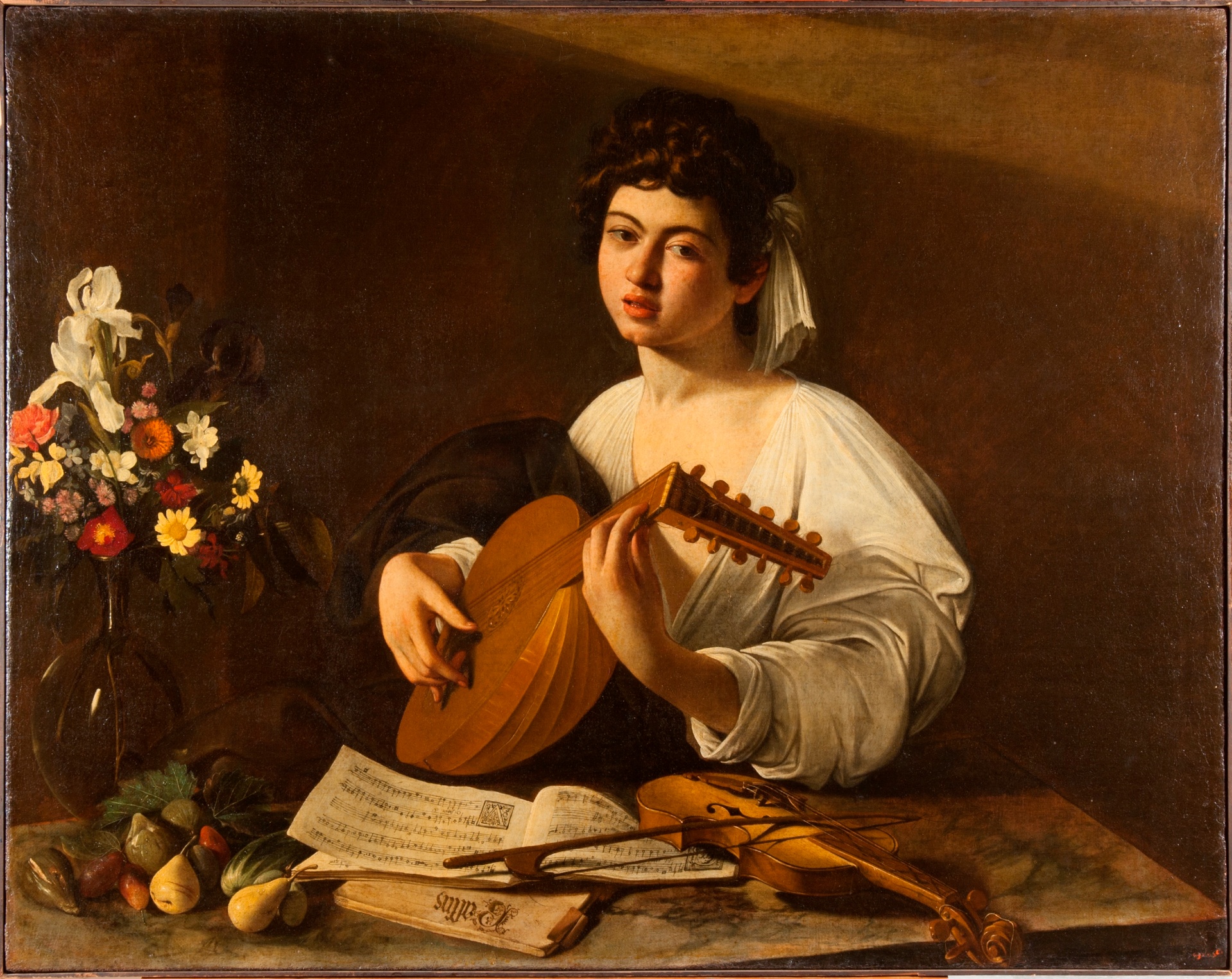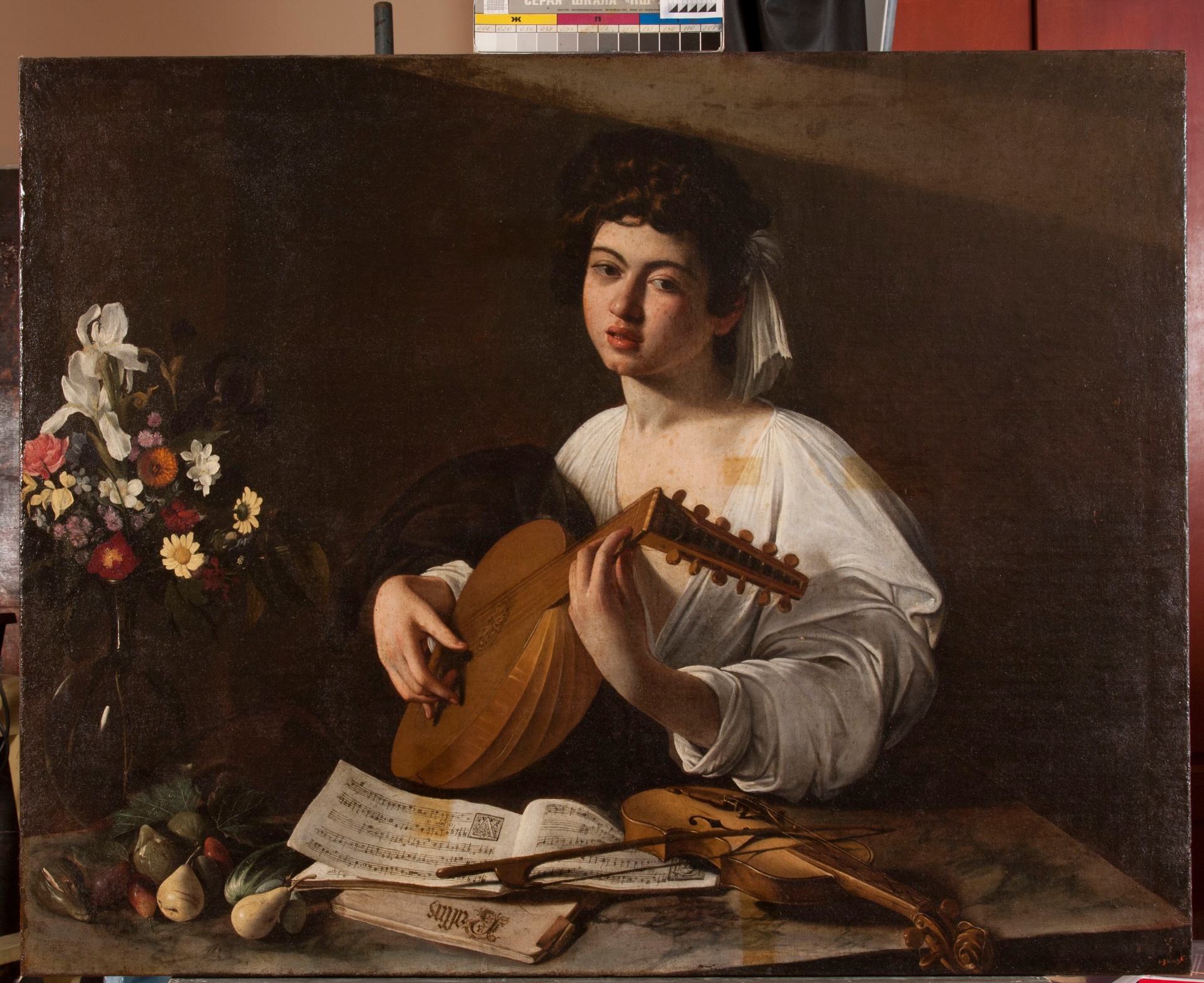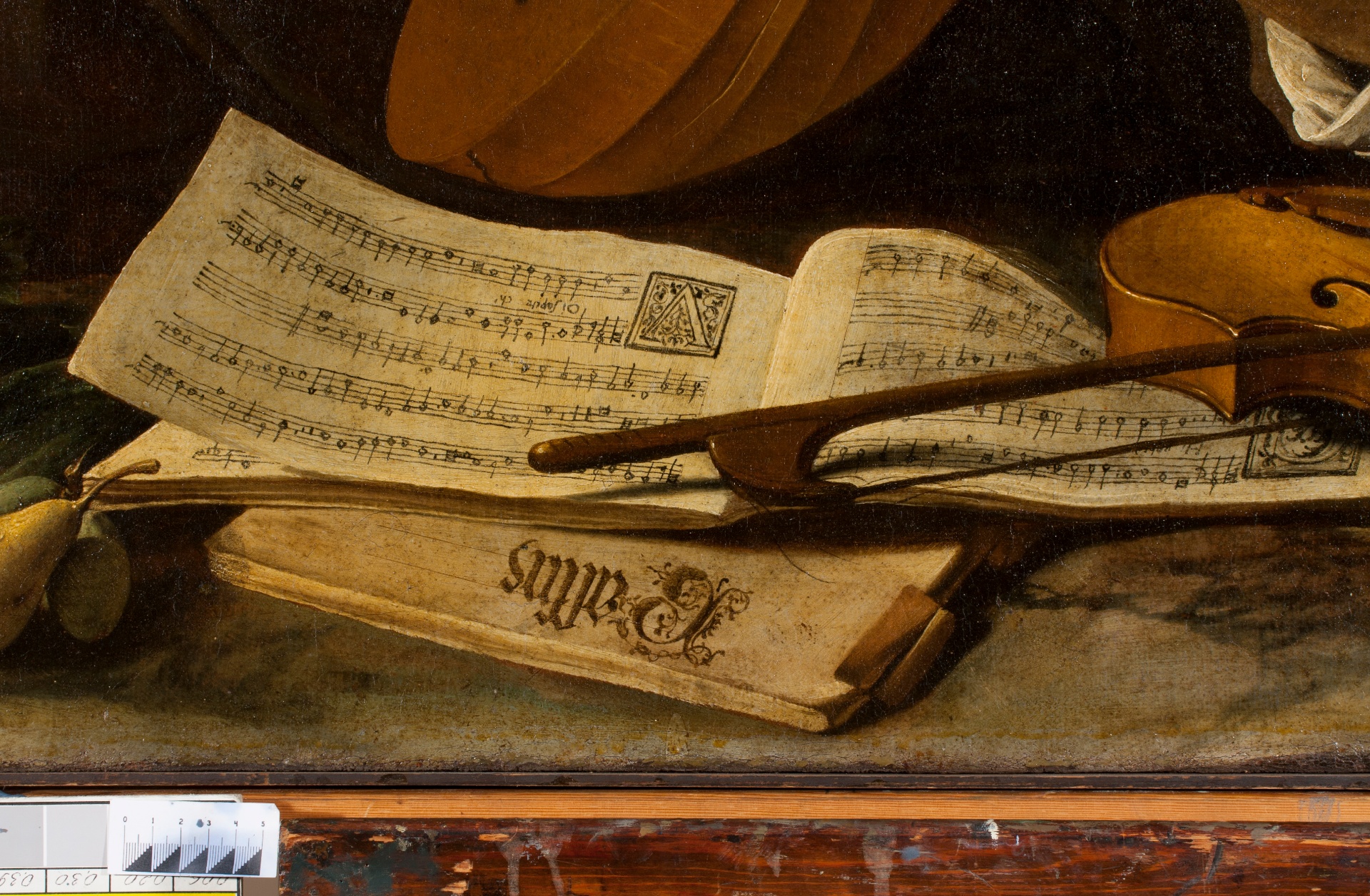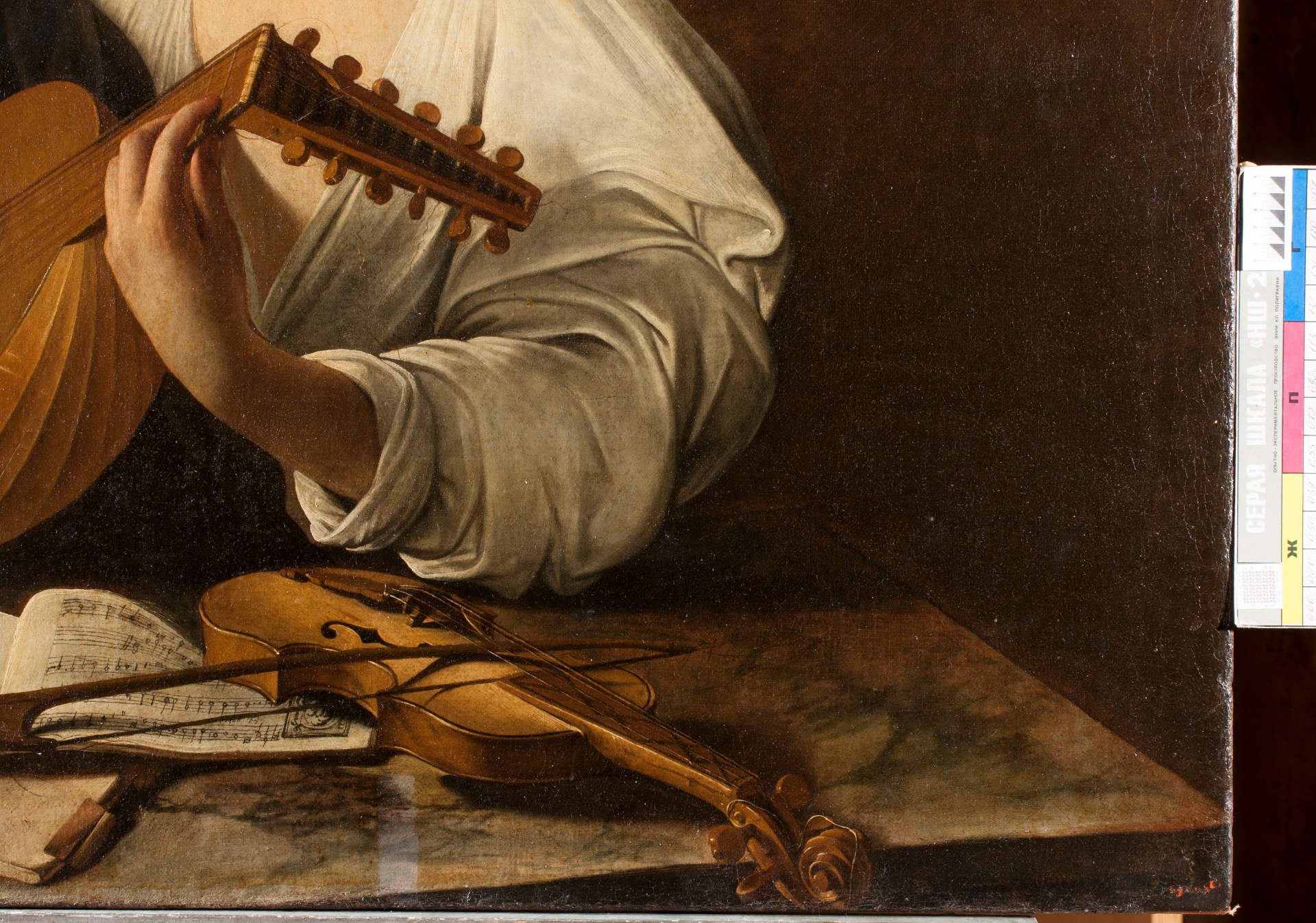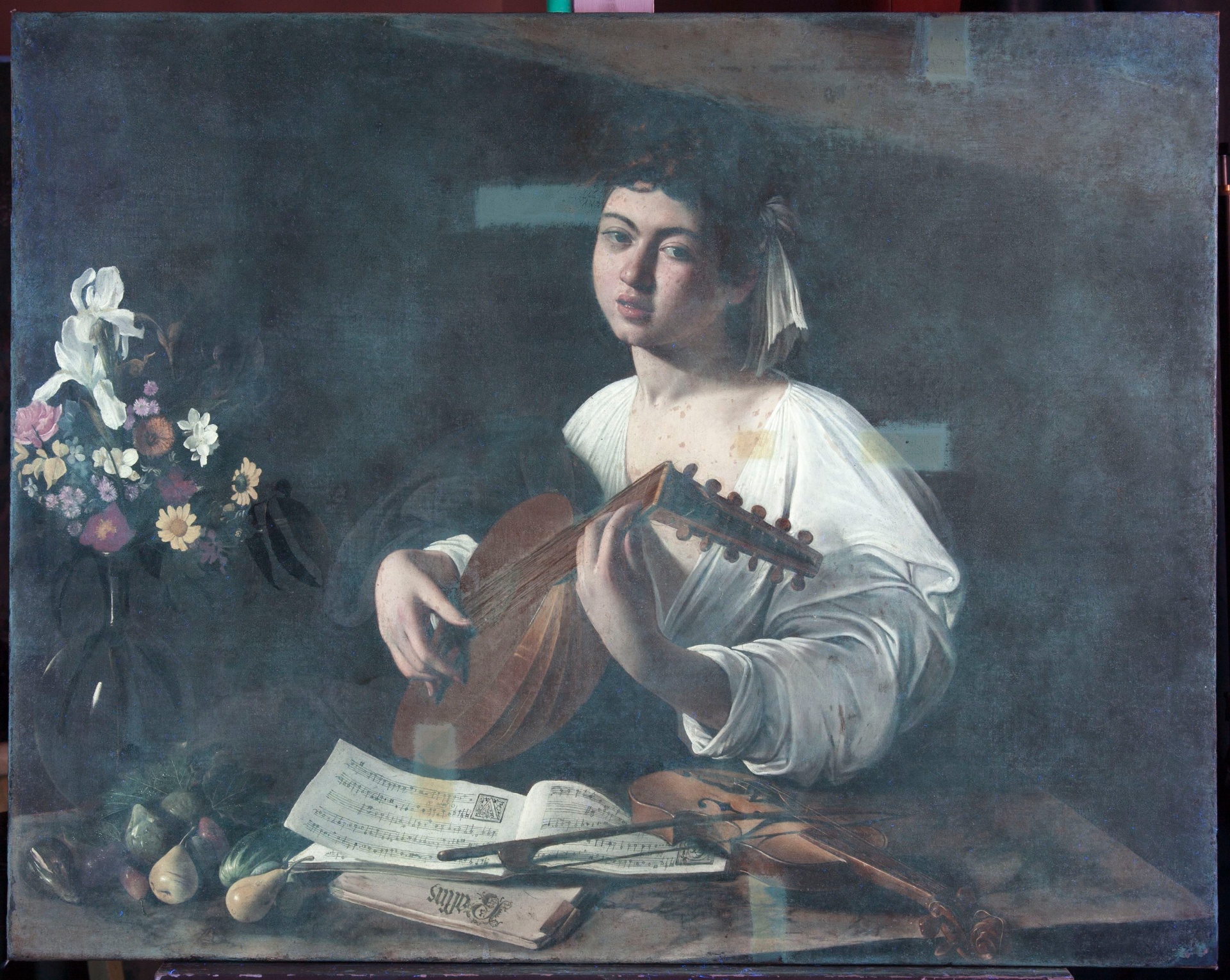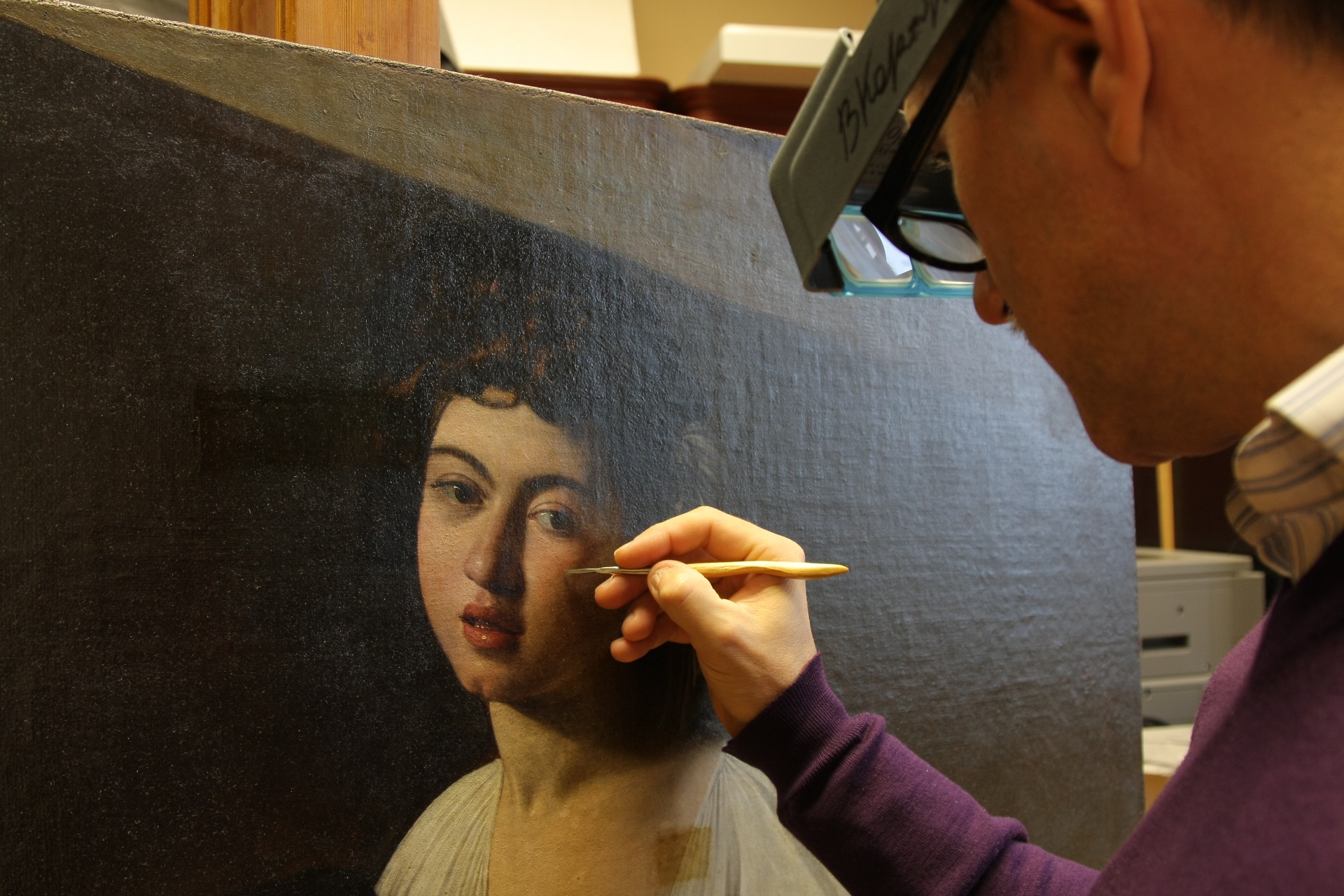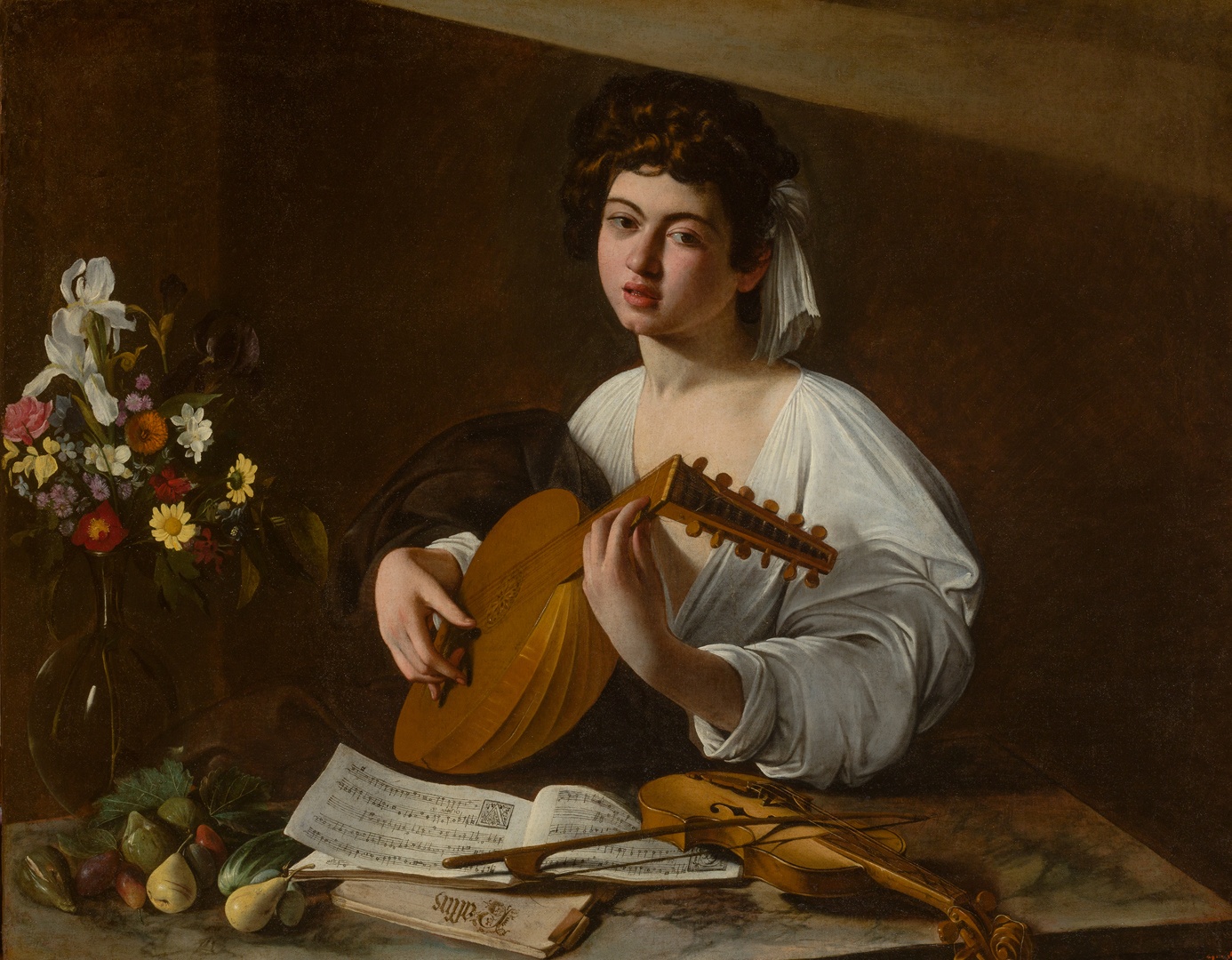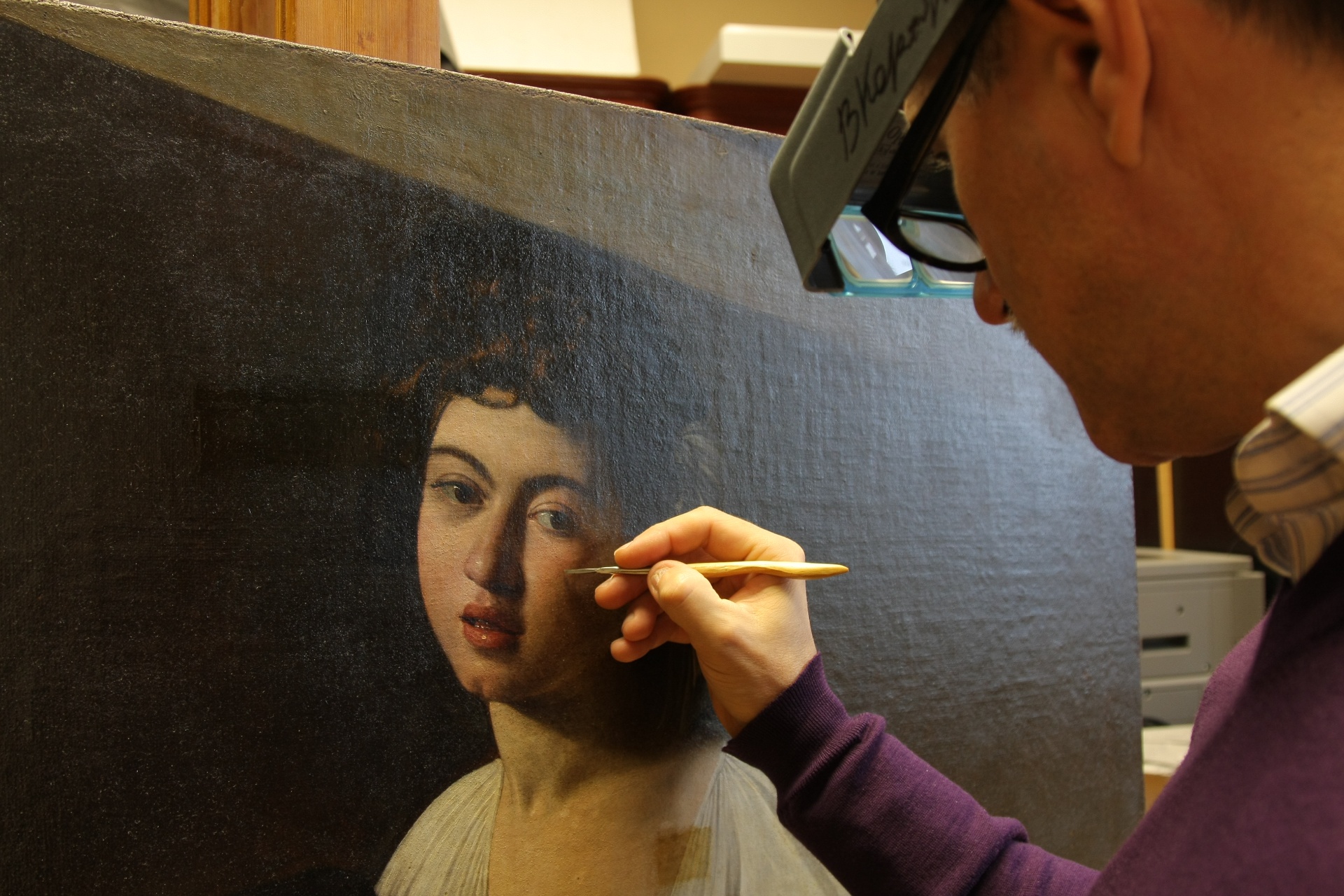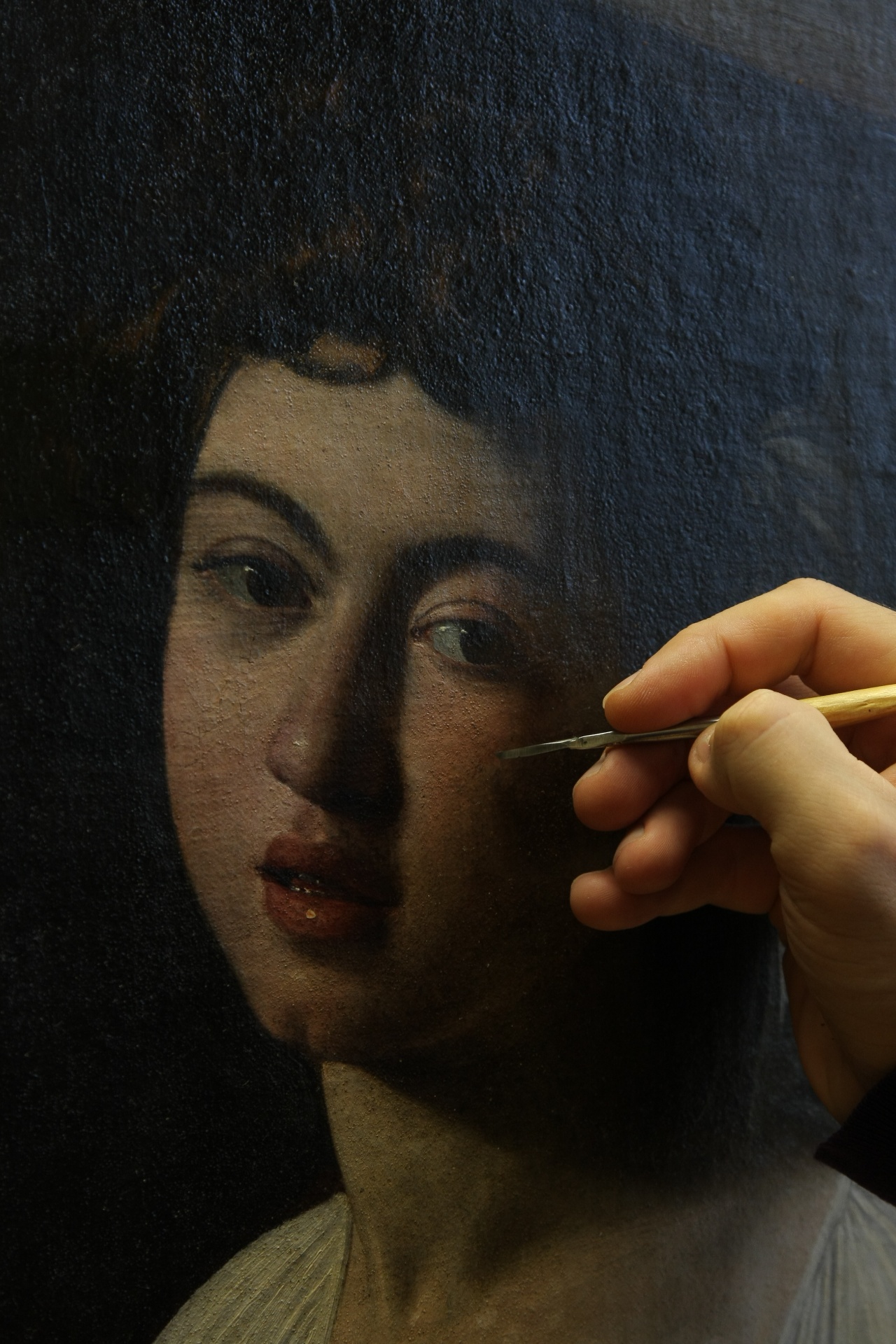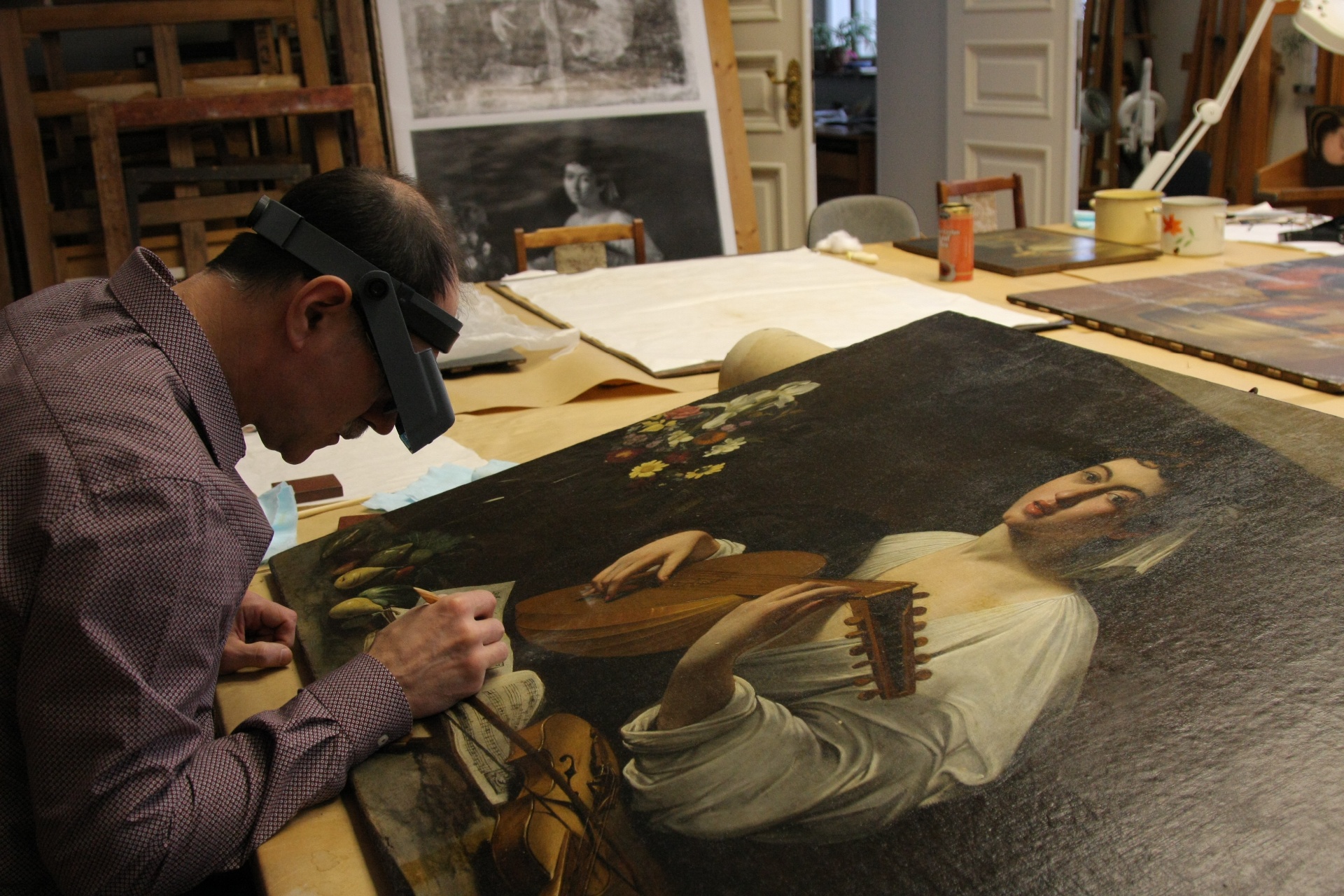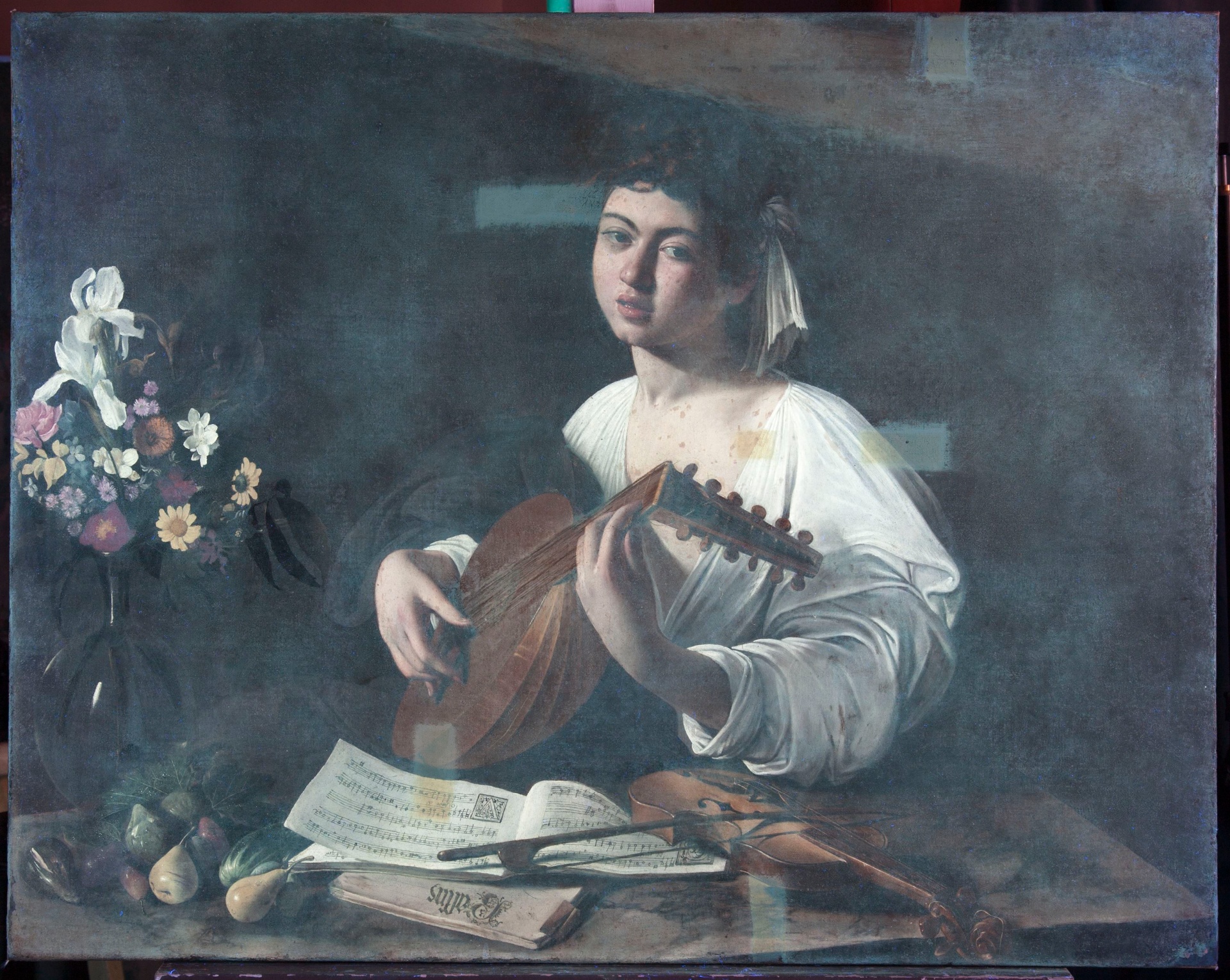Restoration of the painting "Lute-Player" by Caravaggio
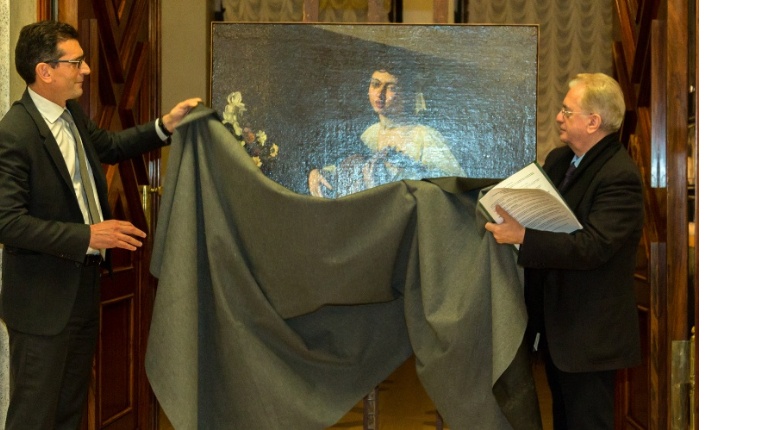
"The Lute-Player", painted by Michelangelo Merisi da Caravaggio in 1595–96, is the only work by the famous master in Russia and it is considered without any exaggeration to be one of the gems of the Hermitage Museum collection.
The Hermitage painting is known to have belonged to Marchese Vincenzo Giustiniani. The Giustiniani collection was put up for sale in Paris and came into the Hermitage in 1808 through the mediation of the director of the Louvre, Dominique Vivan Denon.
Before restoration
Restoration of the painting began in 2015. Exploratory spot cleaning established that there were several layers of varnish of different dates forming a fairly thick film. The layers of tinted varnish, which were badly yellowed and uneven, distorted the painting’s original colouring. In the lower layers the varnish was considerably pigmented and had collected in the hollows within the texture of the paint layer. Test cleaning carried out on areas by the lower edge of the painting, on the depiction of the marble table, and on the background by the upper edge showed the presence of very localized overpainting of minor losses and repainting of abraded areas of the original work.
- 1 / 8
- 2 / 8
- 3 / 8
- 4 / 8
- 5 / 8
- 6 / 8
- 7 / 8
- 8 / 8
Restoration
In the course of restoration, a complete range of technological, physical and chemical research was carried out: X-ray, ultraviolet and infrared examination; identification of the varnish, the vehicle, the paint layers, overpainting and extraneous inclusions. The painting was freed of the later yellowed layers of varnish one-by-one. Areas of overpainting and repainting were removed from the surface of the artist’s original work. Regeneration of the varnish film was repeatedly carried out during the restoration process. Restoration primer was applied in places where the original paint had been lost and losses were made good.
After restoration
After the completion of the removal of the yellow varnish, additions and overpainting, the picture was transformed to a considerable degree, returning closely to the artist’s original colour scheme. The colours became purer, making it possible to fully appreciate the amazing quality of Caravaggio’s work. The information about certain changes made to the composition by the artist himself that was obtained from x-ray photography provides grounds for presuming that the Hermitage’s version of the painting is the earliest of the existing ones on this subject.
 After restoration. Lute-Player Caravaggio (Michelangelo Merisi da Caravaggio) Italy, 1595-1596 Oil on canvas
After restoration. Lute-Player Caravaggio (Michelangelo Merisi da Caravaggio) Italy, 1595-1596 Oil on canvasThe restoration of the painting was carried out by Victor Korobov, artist-restorer of the highest category in the State Hermitage’s Laboratory for the Scientific Restoration of Easel Paintings.
The technological, physical and chemical research was carried out in the Department of Scientific Restoration and Conservation by Kamilla Kalinina, leading researcher, and Andrei Tsvetkov, an artist-restorer, and in the Department for Scientific and Technical Examination by senior researcher Sergei Kharvin.
The restored painting was presented in the Apollo Hall of the Winter Palace in the temporary exhibition “Michelangelo Merisi da Caravaggio. The Lute-Player. Marking the end of the restoration” and now is exhibited in the room 232 of the New Hermitage.

